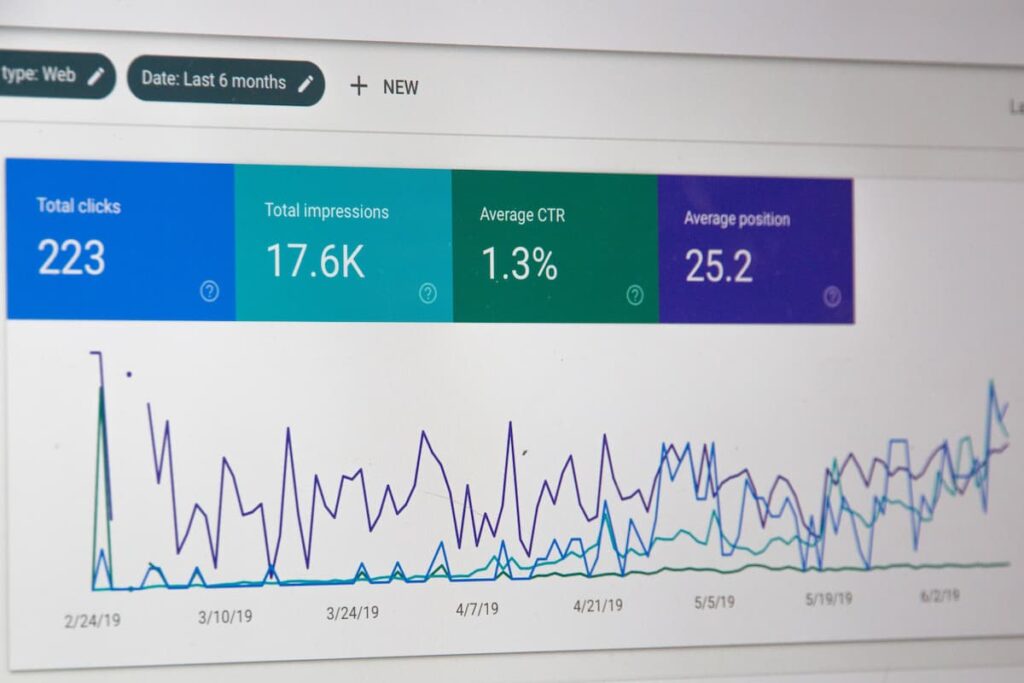
How to Create a Content Marketing Plan for Your Industrial Business

5 SECOND SUMMARY
- Stay focused on your business goals and what your audience wants/needs
- Make sure you’re adding value for your readers, and keep your content updated for the best chance of success
- Look for content inspiration in different places – you’re building trust and influencing behaviour so not everything has to have a sales focus
- Don’t forget to share and distribute your content in different ways
Content marketing is a critical part of any business: over 80% of marketers rely on it for brand awareness and increasing sales and engagement.
But let’s face it, developing a content marketing strategy is challenging for industrial, construction and manufacturing businesses.
This guide will discuss creating a content marketing strategy and some great content ideas to suit your business.
5 Key Questions for Your Content Marketing Strategy
Before you jump in and create social media and blog content, use these questions to guide your marketing and creative decisions.
1. Who Is Your Audience?
Understand who you’re creating content for. Define your audience as accurately as possible, and then tailor your tone and imagery to capture their attention. Find your target audience by looking at search terms and phrases around your business and industry, competitors, social pages, and online forums. You’ll likely discover that you have more than one type of audience, so prepare to target each one.
2. What Are Your Business Objectives?
When creating a content marketing strategy, keep your business objectives at the core of your communications. The main goals include increasing sales, introducing a new product or innovation, registering new users, growing organic traffic, and so on. Every piece of content you publish should meet at least one of these goals.

3. How Will You Measure Your Performance?
Every successful content marketing strategy tracks performance metrics daily, weekly, and monthly. These metrics, or key performance indicators (KPIs), include website traffic, downloads, social engagement, lead generation, and conversion rates. Use free or paid analytics tools to measure these KPIs.
4. Which Types Of Content Will You Create?
Content creation can be a fun, creative challenge that involves the whole team. This is where you determine your brand’s voice and style. Brainstorm on different types of content such as blog posts, photos, short videos, infographics, press releases, tutorials, and portfolios to engage your audience.
5. How Will You Distribute Your Content?
The default avenues to engage with your audience are through your official website and social media pages. However, there are many other ways to get your content out there. Look out for industry-specific forums, magazines, media channels, and influencers who are willing to highlight and share your content. Remember that influencers aren’t just for fashion and makeup: a well-respected engineer, a well-connected peer, or an unbiased industry advocate could be just the ‘influencer’ you need.
Optimise Your Content in 5 Easy Steps
Content marketing could ideally take up 25-30% of your overall marketing budget.
Optimising this content means that you’ll be more likely to get consistent results from your investment. A bigger bang for your buck gives you higher search rankings, greater engagement, and excellent conversion rates.
Here are some simple steps to optimise your content marketing strategy.
Step 1: Do Your SEO Research
Search engine optimisation (SEO) is what gets your business at the top of search engine results. Build your content around the right keywords that your audience is looking for. Narrow down on your niche, and incorporate your keywords in your URLs, titles, headings, and calls to action.
Step 2: Write Clearly
Your content marketing copy should be short, clear, and free of errors. Of course, your copywriting can be playful, uplifting, informative and professional, without using filler words. Pay attention to character limits on different platforms, and double-check the formatting on your blog pages.
Step 3: Use Visuals
Visuals like infographics, checklists, animations, presentations, screenshots, and charts are excellent for sharing across platforms.
Step 4: Promote Your Content
Use a content distribution process to share your content as soon as you publish. Share your content on social platforms, newsletters, industry discussion forums, relevant publications and expert publishing platforms like Medium.
Step 5: Keep Optimising
Update or refresh your content every few months to keep it evergreen. Create a reposting schedule to revive content instead of creating brand new material every time.

Content Ideas for Industrial Businesses
If you’re still wondering how to create a content marketing strategy, here are some practical ideas that work well for industrial businesses.
1. Write Blog Posts in Layman’s Terms
If your company deals with highly technical products or processes, break these down into easy language. Explain your solutions to your readers in the simplest way possible, and encourage them to contact you for further details. Remember, if people can’t understand it, they probably won’t trust it! There’s no need to use a lot of jargon or big words to make yourself look good.
2. Use the Latest Industry Research
Industry reports offer valuable information for your audience, especially when packaged as interactive visuals. Present industry research without the over the top self-promotion to boost your credibility.
3. Offer Facility Tours – Real or Virtual
Make short, high-quality videos to showcase your facilities, machinery and processes. Post these videos on your website and social pages for the biggest impact on your marketing campaign.
4. Develop Buyer’s Guides
If you offer more than one product, create content that shows the pros and cons of each side by side. This clarifies your product details and leads to faster purchase decisions. You can even be totally open and honest and compare your product to a competitor’s equivalent product (and you don’t have to name names).
5. Write Case Studies
Demonstrate the benefits of using your products with practical examples of past and current clients. Your successful track record in your industry makes for good marketing content.
6. Create Calculators and Simulators
A custom calculator can help your audience interact with your website: simply enter your basic project data for a quick quote or a ballpark estimate. A simulator helps your users easily visualise your products online. Both of these strategies can lead to higher conversion rates.
7. Offer Digital Brochures
The old favourite! You’ve probably already got a comprehensive set of brochures for customers looking for specifications and technical info. If you’ve got them, make sure they’re online and accessible! Also, ensure your brochures don’t focus too much on features at the expense of benefits: explain exactly how your customer’s life will be better once they invest in your product.
Summary
These tips show you how to create a content marketing strategy for your industrial business.
Stay focused on your business goals, add value for your audience, and keep your content updated for the best chance of success. And remember to use every opportunity as content inspiration, from niche humour to new machinery to industry awards.
If you need a hand building a strong content marketing strategy to grow your business, get in touch with our team.
Get help with your content marketing


